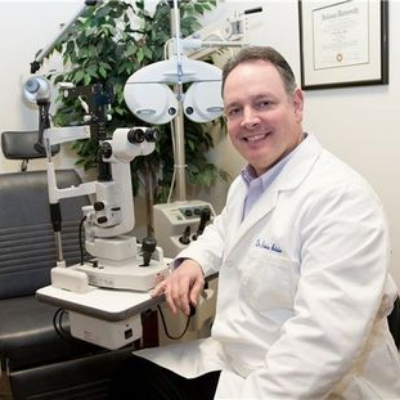Discover Advanced Solutions at Opticore Optometry for Eye Wellness
Wiki Article
Discovering the most up to date Technological Improvements in Optometry and What They Mean for Eye Doctors
In the ever-evolving area of optometry, recent technical developments are reshaping just how specialists approach eye care. From the precision of Optical Comprehensibility Tomography to the nuanced insights offered by AI-driven analysis devices, these advancements are setting brand-new standards in client analysis and treatment. Teleoptometry is positioned to redefine accessibility, making sure that know-how transcends geographical constraints. As these developments permeate the method, eye doctors are faced with the challenge of accepting these tools to boost client end results. The inquiry stays: how will these technical shifts redefine the roles and obligations within the profession?Technologies in Diagnostic Equipment
Advancing the field of optometry, advancements in analysis devices have transformed the means eye treatment professionals assess and detect aesthetic impairments and eye problems. The past decade has seen significant technological advancements, enabling even more comprehensive and precise assessments. Optical Comprehensibility Tomography (OCT), for instance, gives high-resolution cross-sectional photos of the retina, permitting for the very early discovery of diseases such as glaucoma and age-related macular degeneration. This non-invasive imaging strategy has actually become essential in modern optometric method.Another trick advancement is the introduction of sophisticated corneal topography systems, which map the surface area curvature of the cornea with accuracy. These tools are particularly advantageous for suitable call lenses and detecting corneal disorders. Electronic retinal imaging has transformed conventional ophthalmoscopy, supplying comprehensive, breathtaking views of the retina that assist in comprehensive aesthetic assessments.
The advancement of wavefront aberrometry has actually also been crucial, making it possible for the analysis of refractive errors with unmatched precision (Eye Doctor). This technology aids in customizing corrective lenses and enhancing surgical results for refractive surgical treatments. Jointly, these analysis advancements empower eye doctors to supply exceptional individual treatment, making certain very early intervention and customized therapy approaches, ultimately improving visual wellness end results
AI in Patient Monitoring
Structure on the foundation of advanced analysis devices, the consolidation of man-made knowledge (AI) in individual administration stands for a transformative leap for optometry. AI systems are increasingly used to boost efficiency, precision, and customization in client care. By assessing huge quantities of information, AI can recognize patterns and forecast potential eye problems, enabling eye doctors to tailor treatments a lot more effectively. This capability is important in handling persistent eye illness such as glaucoma and diabetic retinopathy, where very early discovery and constant tracking are vital.Furthermore, AI-driven systems promote structured patient communications and management procedures. Automated scheduling, digital consultations, and individualized follow-up plans not just improve individual fulfillment yet additionally optimize time administration for practitioners. These systems can triage clients based upon the urgency of their problems, guaranteeing that those in crucial requirement get timely focus.
In addition, AI improves decision-making by providing eye doctors with evidence-based suggestions and treatment pathways. By incorporating data from digital health documents, AI tools supply understandings that inform professional decisions, lowering the risk of errors and enhancing individual outcomes. As AI proceeds to advance, its role in patient monitoring will likely increase, reshaping the landscape of optometric care.
Breakthroughs in Retinal Imaging
In the world of optometry, retinal imaging has actually experienced exceptional technological innovations that are enhancing diagnostic capabilities and person treatment. Advancements such as Optical Coherence Tomography (OCT) and fundus photography have transformed just how eye doctors analyze the retina and imagine.Enhanced imaging techniques like OCT angiography are further refining analysis precision. Eye Doctor. Such improvements assist in the recognition of minute retinal modifications that might symbolize condition progression.
Furthermore, improvements in man-made intelligence are increasing retinal imaging by allowing automated analysis of huge datasets. These systems aid optometrists in determining patterns indicative of pathology, consequently boosting analysis precision and efficiency. Jointly, these innovations are changing retinal imaging right into a keystone of modern eye care, boosting end results and increasing therapeutic possibilities.
Teleoptometry's Growing Duty
Teleoptometry is increasingly ending up being a crucial part of eye care, driven by advancements in digital interaction and diagnostic devices. As optometry welcomes digital change, teleoptometry helps with remote consultations, enabling eye doctors to expand their solutions past typical borders. This is particularly useful in country and underserved areas where access to specialized eye treatment is typically minimal. By leveraging high-resolution video clip conferencing and advanced retinal imaging, eye doctors can perform extensive eye tests from basics afar, ensuring timely medical diagnosis and treatment.The integration of artificial intelligence (AI) further boosts teleoptometry, enabling the analysis of visual data and assisting in the detection of eye conditions such as glaucoma and diabetic person retinopathy. AI-powered algorithms can rapidly interpret complex imaging information, providing eye doctors with beneficial insights that strengthen professional decision-making.
Moreover, teleoptometry sustains continuity of treatment with smooth combination with digital health and wellness records (EHRs), enabling eye doctors to maintain comprehensive client backgrounds. This ensures that patients get consistent and individualized care also when talking to various experts.
Regardless of these advantages, difficulties stay, including ensuring data safety and security and handling individual expectations. Teleoptometry stands for a substantial stride towards more easily accessible, efficient, and patient-centered eye treatment. As innovation advances, its duty is poised to expand even more.

Future Fads in Eye Care
A myriad of cutting-edge fads is readied to improve the future of eye treatment, driven by technical improvements and the progressing demands of patients. One considerable fad is the assimilation of expert system (AI) in diagnostics, which assures to boost the accuracy and performance of eye assessments. AI algorithms can assess large amounts of data from retinal photos, possibly discovering conditions like diabetic retinopathy and glaucoma earlier than traditional techniques.Additionally, personalized medication is gaining grip in optometry, with genetic testing notifying personalized therapy plans. This strategy intends to enhance patient end results by tailoring treatments to private hereditary profiles. Wearable modern technology, such as wise get in touch with lenses, is additionally coming up, providing real-time surveillance of intraocular stress or glucose levels, therefore providing constant insights into systemic and eye health and wellness.
The fostering of enhanced truth (AR) and digital her latest blog fact (VR) in training and client education is one more arising pattern. These modern technologies offer immersive experiences that can improve understanding and abilities both for eye doctors and clients. As these patterns evolve, optometrists need to stay abreast of technological innovations to provide sophisticated care, ensuring improved client outcomes and complete satisfaction in the vibrant landscape of eye care.
Verdict

Jointly, these analysis improvements equip optometrists to provide remarkable client treatment, making sure early intervention and customized treatment approaches, eventually boosting aesthetic health and wellness end results.

As these technologies proceed to progress, eye doctors must adjust and integrate them right into practice, eventually optimizing process efficiency and boosting the criterion of eye treatment supplied to patients.
Report this wiki page